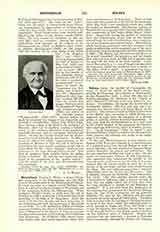

Heisterbach (VALLIS S. PETRI), a former Cistercian monastery in the Siebengebirge near the little town of Oberdollendorf in the Archdiocese of Cologne. It traces its origin to a knight named Walther, who lived as a recluse on the Stromberg, or Petersberg, one of the mountains forming the Siebengebirge. When numerous disciples began to settle near the cell of Walther, he built a monastery (1134) where they lived according to the Rule of St. Augustine. After the death of Walther his disciples left their monastery on the Petersberg and built the monastery of Reussrath on the Sulz. In 1189 Archbishop Philip of Cologne requested Gisilbert, the Abbot of the Cistercian monastery of Himmerod in the Diocese of Trier, to repeople the deserted monastery of Petersberg with Cistercians from Himmerod. On March 22, 1189, twelve Cistercian monks with their newly-appointed Abbot Hermann took possession of Petersberg. Three or four years later they removed to the foot of the mountain, where they built a new monastery which they called Petersthal or Heisterbach. The famous basilica of Heisterbach was begun by Abbot Gerard (1195-1208), and consecrated in 1237 under Abbot Henry (1208-1244). Being built during the period of transition from the Romanesque round arch to the Gothic pointed arch, its style of architecture was a combination of the Romanesque and the Gothic. Heisterbach, which had large possessions and drew revenues from many neighboring towns, remained one of the most flourishing Cistercian monasteries until its suppression in 1803. The library and the archives were given to the city of Dusseldorf; the monastery and the church were sold and torn down in 1809, and at present only the apse with the ruins of the choir remains. Caesarius of Heisterbach (q.v.), one of the greatest men that the Cistercian Order has produced, was a monk at this abbey (1199—c. 1240). A monument was erected in his honor near the ruins of Heisterbach in 1897.
MICHAEL OTT

